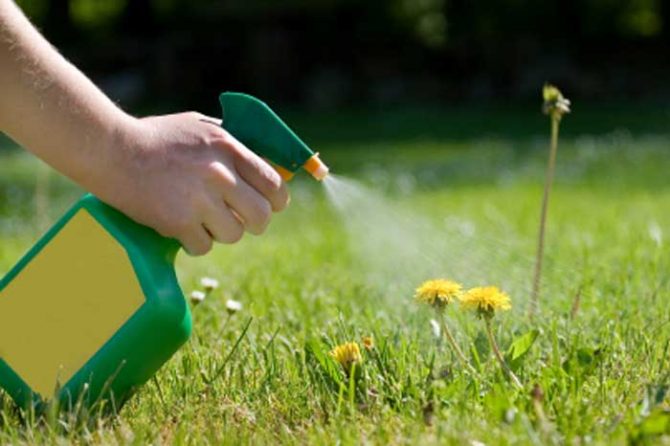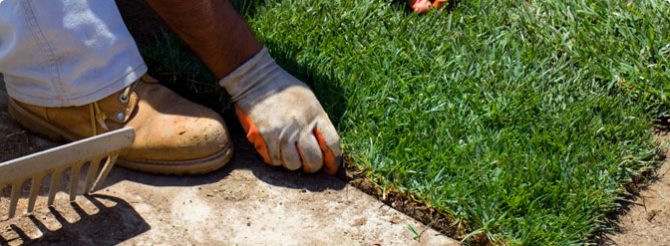Poison ivy is a special type of plant and it is grown widely in North America. It belongs to the cashew anacardiaceous family. The plant is grown as a vine. This means that it trails on the ground forming a loose mat in the process.
The tree can grow very wild as it can reach to the treetop and can cover a fence posts. You can get specie that can grow up to one hundred feet and even more. Usually the plant records most of its growth before flowering starts.
[tr-indexa header=”Table of Content”]
The plant propagates itself by seed; it can also propagate through its leaves. It can also grow through its stem. Root can sprout from any part of the stem that touches the ground.
Ivy plants are unique because it protects itself through its oil called the Urushoil. This oil is dangerous when it is exposed to human skin. It can cause different types of rashes known as ivy rashes.
It can result in severe rashes such as burning, skin bubbling, and other extreme allergic reactions. When such reactions occur, it will take medical intervention to overcome it. It could take as much as three weeks for such reactions to be treated.
11 Poison Ivy Home Remedies
Because of the dangers posed by the plant, it is necessary that you get rid of it from your compound. The major challenge many people face is finding the most effective way of getting rid of poison ivy.
Before you begin to consider the most effective way of getting rid of it, you have to understand what the plant is, and what it looks like in order to get rid of it. Ivy leaf is green, shinny and thin. It usually has three leaves and irregular edges. If you reside in the US and Canada and other parts of the world where the plant is grown, you would be used to it.
1. Pulling the plant from the ground
The most effective way of getting rid of poison ivy is to uproot it from the ground if the plant is still small. If it has overgrown, pulling might not be the best way to get rid of it. However, before you decide to pull it, you must not be allergic to the plant. If you have a relation or a friend who is not allergic to it, such a person can help you to pull it out of the ground.
If you want to pull it, you have to protect yourself, by covering your body properly. You have to cover your hands with gloves and other parts of your body; the essence is to prevent direct body contact with the plant.
After you have pulled it out of the ground, you must wash your hands properly. Ensure that you do not expose yourself at anytime you want to get rid of poison ivy.
2. Dig the root and remnants out of the ground
It might not be possible to pull out everything, when that becomes the case; you have to dig the remnants out the ground. To ensure a complete removal dig at least eight inches deep on the ground. You can remove everything when you dig it.
Cover the area with paper or with a cardboard, this will ensure that it does not have an opportunity for a re-grow after you have removed everything. Package the waste and deposit it at the garbage box for ultimate disposal.
3. Mix water, salt and soap
If you do not want to use manual labor technique to remove poison ivy, you have to mix salt, water and dish soap. Mix 3 pounds of salt, one gallon of water, and one quarter cup of dish soap. Ensure that you mix them very well.
When it is well mixed, you can pour it into a sprayer and use it on the poison ivy. This can kill any plant that it comes in contact with. Before you apply it, you must ensure that you use it on the poison ivy only, and not those that you do not want to get rid of.
4. Cut the plant down
If poison ivy gets bigger such that it is not possible to pull, or dig it off the ground, you can cut down the plants. You can apply a sturdy garden shears to cut it from its base. Ensure that you cut it down to the ground as much as you can.
After cutting it to the ground, clean the shears to remove the poisonous oils from it. You can do this by using soap and water to wash the shear thoroughly.
5. Use Herbicide
You can use chemical herbicides to remove poison ivy from your compound. You can apply this chemical to the plant when you cut it to the ground. This could prevent the stem from re-growing.
The part that is remaining on the ground should be treated with herbicide to prevent re-growth. This herbicide does not only kill poison ivy, but it can kill other plants as well. You have to be careful to ensure that you restrict it poison ivy only.
6. Apply White vinegar
Another way you can get rid of poison ivy is by applying white vinegar. White vinegar should be plain and undiluted. You have to apply this solution directly to the plant you want to get rid of. Apply this the same way you apply chemical herbicides.
This means that you can apply it to both cut stems and untrimmed leaves and so on. You have to exercise patience with this method, because it does not act very fast like chemical herbicides, but it would eventually get rid of it.
7. Apply boiling water
Boil water in a kettle, and apply it directly to the roots of the plants that you want to get rid of. You have to apply this method consistently before you can achieve your desired results. If you want to achieve your objectives, dig the root of the plant and apply it there.
Expose the portion of the root and apply it directly to the root. You have to be very careful while doing that, because even dead ivy plants can still be poisonous.
8. Plant grasses
When you have removed the poison ivy plant from your area, you have to plant grasses around the area. This will forestall re-growth of such plants in the future. Scatter enough quantities of grass seed and allow it to grow.
When it has grown, it would prevent the poison ivy from growing, because it will choke it out. You should not expect this treatment to be automatic, as it can take sometimes before the seeds begin to grow.
9. Employ the services of a landscaper
Another way you can completely remove the poison ivy is to engage the services of a landscaper. As professionals, they are going to do a better job, because they were the ones trained on how to do such a job.
Just pay them their fees and stop worrying about your safety. When the landscaper has successfully removed it, you can apply herbicide in that area to ensure that it does not grow again.
10. Spray an alkaline solution
Some people believe that the best way to get rid of poison ivy plant from your home is to apply an alkaline solution. There are different types of alkaline solution that you can use to remove this tree from your neighborhood.
11. Mow the plant regularly
Another way of getting rid of poison ivy is to mow the plant regularly anytime it grows. When you mow it, it would take time before it grows again. However, while doing that you must ensure that it does not touch you to prevent ivy rashes.
Best Treatment For Poison Ivy
If you notice that your skin has been exposed to poison ivy, you have to treat it to prevent poison ivy rashes.
1 . Wash the area affected
The first thing that you have to do is to wash the area affected by that immediately. Within the first thirty minutes of coming into contact with the poison, you have to wash those parts of your body affected with mild soap and warm water.
You need to take action quickly to prevent that oil from entering into your body. When you wash it promptly, it would prevent the oil from getting inside your body.
2. Apply Scrubs on fingernails
You have to apply scrub to your fingernails using a brush. If you do not do this, some of the oils could get deep into your fingernails and you have to clean it properly to ensure it is completely removed.
Remove all clothes you were wearing and ensure that you replace it with fresh clothes after washing your body. In the same way, you can clean your pets if you suspect that they have been exposed to the poison.
Conclusion
With these simple measures, you can get rid of poison ivy and the rashes associated with it.


